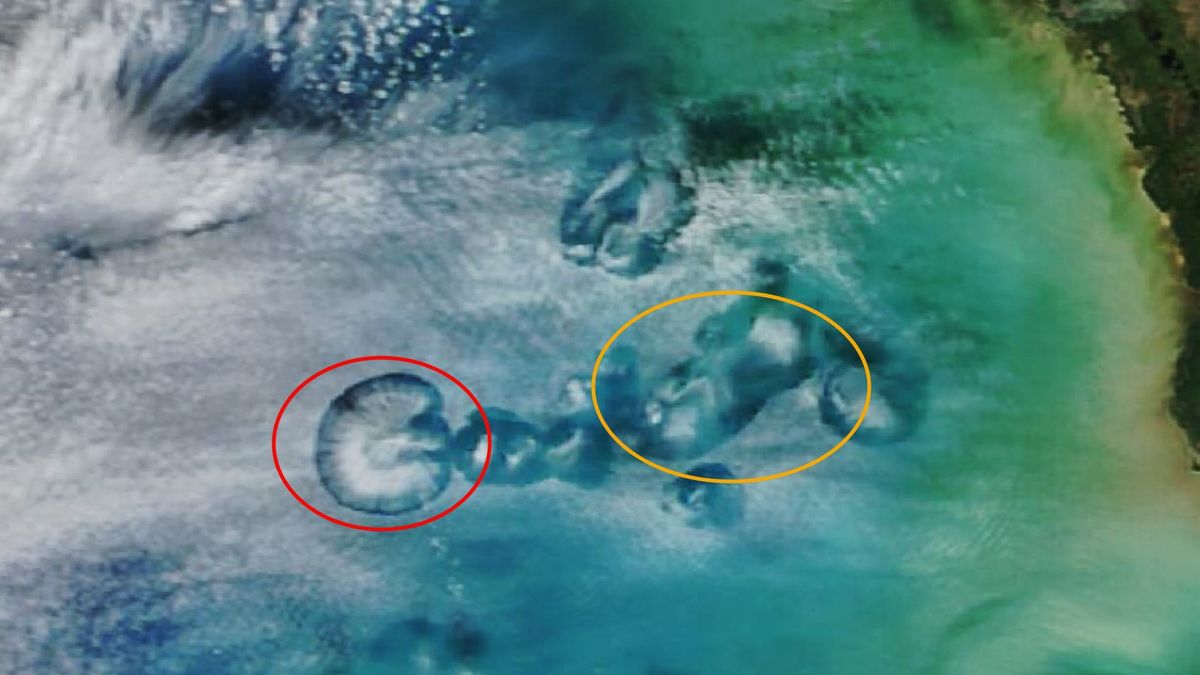Satellite snaps eerily circular holes in the clouds above Florida. What caused them?
A NASA satellite recently spotted a series of bizarre "fallstreak holes" in clouds above Florida. The circular cloud gaps have been previously (and incorrectly) linked to paranormal phenomena.

A cluster of eerily circular holes recently appeared in the clouds above Florida, a stunning new NASA image shows. The rare occurrence, which has previously (and incorrectly) been linked to UFOs, has a surprisingly simple explanation — but it took scientists more than 60 years to figure it out.
NASA's Terra satellite photographed the bizarre voids, known as fallstreak holes or hole-punch clouds, above the Gulf of Mexico off Florida's west coast on Jan. 30. NASA's Earth Observatory revealed the striking image on Feb. 26.
Unusual, circular holes like these ones first began to appear in the 1940s, sparking wild theories that they were the result of UFOs, according to the Earth Observatory. However, they are actually created by airplanes flying through the clouds.
Related: What are different types of clouds and how do they form?
There are two types of clouds in the new photos: cavum clouds, which are large, circular holes; and canal clouds, which have a more oblong shape. Both types most commonly occur in altocumulus clouds — supercooled bands of water vapor that float in the sky between 7,000 and 18,000 feet (2,100 and 5,500 meters) above the surface, much higher than most rain clouds.
Altocumulus clouds can be as cold as around 5 degrees Fahrenheit (minus 15 degrees Celsius) without their water droplets freezing. This is because there are fewer small particles, such as dust and pollen, at that altitude, which are needed for ice crystals to form in the air.
However, when air moves around the wings or past the propellers of airplanes, it can further cool the surrounding water vapor by as much as 36 F (20 C). At these extremely low temperatures, the droplets freeze even without particles to form around and begin to fall below the holes, creating wispy strands of cloud, known as virga.
Breaking space news, the latest updates on rocket launches, skywatching events and more!
These wispy clouds often hang below the holes they fell from and can be seen at the heart of the misty voids when viewed from above.
The holes in the new image were all created by planes taking off from Miami International Airport, according to the Earth Observatory.
Cavum and canal clouds can also form naturally when specific regions of the atmosphere cool down, but this is rare.
Scientists only discovered what was causing the more frequent artificially created holes within the last 15 years. In a 2011 study, researchers used satellite images and flight data to prove that planes were responsible.
The study also showed that the angle at which planes rise and descend through the clouds affects which type of hole will appear: A steep angle will create the more circular cavum clouds, while a more shallow angle will create stretched canal clouds.
Cavum and canal clouds normally last around one hour before they close up, but their lifespan can be impacted by other factors such as temperature, cloud density and wind speeds, the study found.
The holes pose no threat to people on the ground but they can slightly increase the amount of precipitation that occurs in the areas surrounding airports, the study showed.

Harry is a U.K.-based staff writer at Live Science. He studied Marine Biology at the University of Exeter (Penryn campus) and after graduating started his own blog site "Marine Madness," which he continues to run with other ocean enthusiasts. He is also interested in evolution, climate change, robots, space exploration, environmental conservation and anything that's been fossilized. When not at work he can be found watching sci-fi films, playing old Pokemon games or running (probably slower than he'd like).


